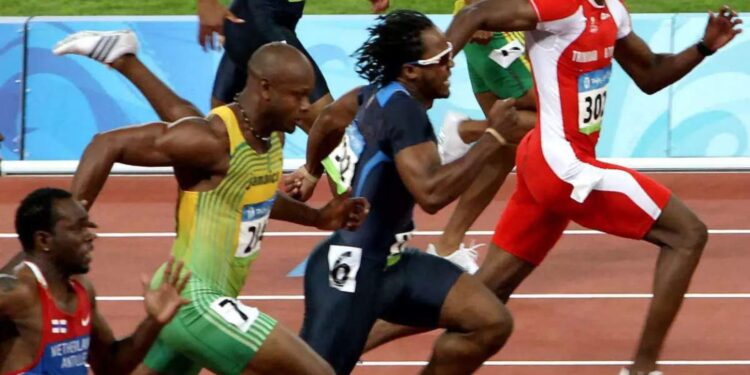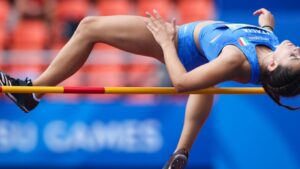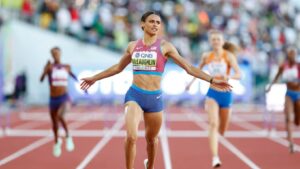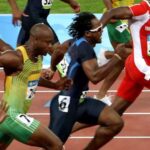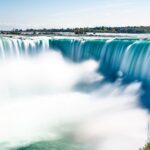Induk Organisasi untuk Olahraga Atletik di Dunia Adalah
As an expert in the field, I’ll delve into the significance of organizational structures for athletic sports Induk Organisasi untuk Olahraga Atletik di Dunia Adalah worldwide. Athletic organizations play a pivotal role in 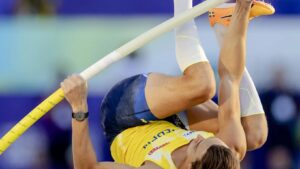
When examining the landscape of athletic organizations globally, it’s evident that their impact extends beyond mere competition. They serve as catalysts for promoting sportsmanship, Induk Organisasi untuk Olahraga Atletik di Dunia Adalah teamwork, and physical well-being among individuals of all ages. The intricate web of these organizations not only supports elite athletes but also encourages grassroots participation in athletics.
By understanding the core functions and importance of athletic organizational bodies worldwide, we can appreciate how they contribute to the growth and sustainability of sports at every level. From local clubs to international federations, these entities play a crucial role in shaping the landscape of competitive athletics while fostering a culture of inclusivity and excellence.
Overview of Athletic Organizations
As someone deeply entrenched in the world of sports, I find it fascinating to delve into the realm of athletic organizations. These entities play a pivotal role in shaping the landscape of competitive sports globally, fostering talent, promoting events, and upholding standards of fair play.
Athletic organizations come in various forms, ranging from international governing bodies like the International Olympic Committee (IOC) to national federations such as USA Track & Field. Each organization Induk Organisasi 
One prominent example is FIFA (Fédération Internationale de Football Association), which governs association football worldwide. With member associations from across the globe, FIFA holds immense influence over the sport and its major tournaments like the FIFA World Cup. Such organizations not only regulate gameplay but also drive commercial activities that fuel the economic engine of modern sports.
In addition to their regulatory roles, athletic organizations often engage in grassroots initiatives to promote participation at all levels. Programs aimed at youth development, gender equality, and social inclusion reflect a broader commitment to using sports as a tool for positive societal change. By supporting athletes’ growth from amateur ranks to elite competition, these organizations shape the future of athletics on a global scale.
International Association of Athletic Federations (IAAF)
The International Association of Athletic Federations (IAAF) is the world governing body for the sport of athletics, covering track and field, long-distance running, and race walking. Established in 1912, it oversees prestigious events like the World Athletics Championships and sets the rules for competition at the international level. With its headquarters in Monaco, IAAF plays a crucial role in promoting fair play, athlete welfare, and global participation in athletics.
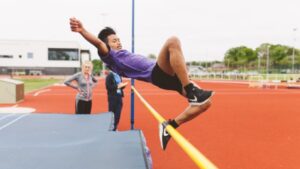
- Event Management: Organizing major competitions such as the Olympics and Diamond League.
- Rule Setting: Establishing guidelines on equipment specifications, doping regulations, and competition formats.
- Athlete Development: Supporting training programs and initiatives to nurture talent worldwide.
Notable Achievements:
- World Records: Recognized by IAAF as official marks achieved under specific conditions.
- Anti-Doping Efforts: Implementing strict protocols to ensure a level playing field for all athletes.
- Gender Equality: Advocating for equal opportunities for male and female competitors.
Impact on Global Athletics:
The IAAF’s influence extends across continents through partnerships with national federations. By fostering grassroots initiatives and elite athlete support systems, it contributes to the growth of athletics at all levels. The organization’s dedication to upholding integrity within the sport has led to increased viewership and engagement worldwide.
In conclusion, the International Association of Athletic Federations plays an indispensable role in shaping the landscape of competitive athletics on a global scale. Its commitment to excellence and inclusivity continues to inspire athletes of all backgrounds to strive for greatness both on and off the track.
World Anti-Doping Agency (WADA)
The World Anti-Doping Agency (WADA) plays a crucial role in maintaining the integrity of sports worldwide. It is an international independent agency established in 1999 to promote and coordinate the fight against doping in 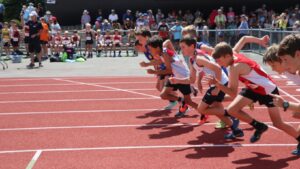
One of WADA’s primary functions is to develop and implement the World Anti-Doping Code, which harmonizes anti-doping policies across all sports and countries. The Code sets out uniform rules for anti-doping regulations, testing protocols, sanctions for violations, and education programs. By standardizing these aspects, WADA aims to prevent doping practices that undermine the spirit of fair play.
Through its Anti-Doping Administration and Management System (ADAMS), WADA enables efficient sharing of information among relevant anti-doping organizations. This centralized database helps streamline the management of athlete whereabouts information, therapeutic use exemptions, and test results. By leveraging technology, WADA enhances transparency and accountability in the anti-doping process.
WADA conducts research to stay ahead of emerging doping trends and substances. By collaborating with scientific experts and laboratories worldwide, WADA continuously updates its prohibited list to include new performance-enhancing drugs or methods. This proactive approach ensures that athletes compete on merit alone without artificial enhancements that could jeopardize their health or tarnish the reputation of their sport.
In conclusion, WADA serves as a cornerstone in safeguarding the principles of clean competition within the realm of athletics globally. Its efforts not only deter doping practices but also uphold ethical standards that resonate with fans who value authenticity in sports performances. As we delve deeper into discussions about preserving the purity of athletic endeavors, WADA remains at the forefront as a beacon advocating for fairness, integrity, and respect in every sporting discipline it oversees.
Olympic Committee and Athletics
When it comes to the world of athletic sports, the Olympic Committee stands out as a pivotal organization that oversees and governs various aspects of athletics globally. The International Olympic Committee (IOC) plays a fundamental role in promoting and organizing the prestigious Olympic Games, where athletics hold a significant 
The relationship between the Olympics and athletics dates back to ancient times, showcasing how track and field events were at the core of these historic competitions. Today, the IOC continues to uphold the values of athleticism, fair play, and international cooperation through its support and development of various athletic disciplines.
Under the umbrella of the IOC, different National Olympic Committees (NOCs) work tirelessly to nurture talented athletes, provide them with opportunities for training and competition, and ensure their participation in major international events like the Olympics. These NOCs serve as essential pillars in supporting athletes’ journeys from grassroots levels to becoming world-class competitors.
Athletics within the Olympic movement embody not only physical prowess but also unity among nations worldwide. The spirit of sportsmanship transcends borders during every edition of the Games, emphasizing camaraderie and mutual respect among athletes regardless of their backgrounds or affiliations. As we delve deeper into this dynamic relationship between the Olympic Committee and athletics, we uncover a rich tapestry woven with passion, dedication, and extraordinary performances on both individual and team levels.
National Governing Bodies for Athletics
When it comes to overseeing and regulating athletic activities on a national level, NGBs (National Governing Bodies) play a crucial role. These organizations are responsible for setting standards, organizing competitions, and promoting the development of athletics within their respective countries. Let’s delve into some notable 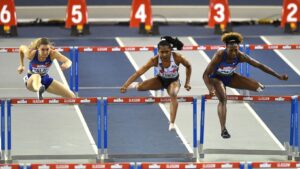
United States: USA Track & Field (USATF)
In the United States, USA Track & Field (USATF) stands out as the governing body for track and field, long-distance running, and race walking. Founded in 1979, USATF plays a key role in selecting athletes to represent the country at international events like the Olympics. With over 130,000 members nationwide, USATF is instrumental in fostering talent and ensuring compliance with regulations.
United Kingdom: UK Athletics
Across the pond in the United Kingdom, UK Athletics takes charge as the governing body for track and field, cross country running, road running, and race walking. Established in 1999, UK Athletics oversees elite athlete funding programs and competition structures within Britain. Its focus on grassroots development has helped nurture top-tier athletes who compete on a global stage.
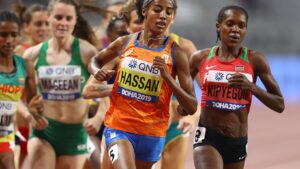
Down under in Australia, Athletics Australia serves as the national governing body for athletics since its inception in 2013. By organizing national championships and supporting athlete pathways from junior levels to elite ranks, Athletics Australia plays a pivotal role in shaping the future of Australian athletics. Their initiatives aim to enhance participation rates while maintaining high performance standards.
Japan: Japan Association of Athletics Federations (JAAF)
In Japan, the Japan Association of Athletics Federations (JAAF) holds authority over track and field sports. Established more than 70 years ago following World War II, JAAF focuses on developing competitive athletes through coaching programs and hosting major domestic competitions like the National Championships. It also collaborates with schools to promote athletics among youth across Japan.
By understanding how these NGBs operate within their respective countries’ sporting landscapes, we gain insight into their significant contributions towards nurturing talent” growing participationand upholding standards in athletic pursuits globally.
As I reflect on the role of sports organizations in the world of athletic athletics, it becomes evident that these 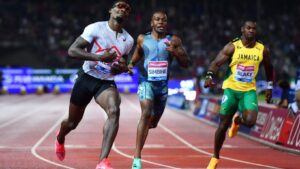
In examining the impact of sports organizations, one cannot overlook their role in fostering talent, providing resources, and creating platforms for athletes to showcase their skills on an international stage. Through strategic partnerships and investment in infrastructure, these organizations pave the way for athletes to reach their full potential and inspire future generations.
Furthermore, the collaborative efforts between sports organizations, governments, sponsors, and communities underline a shared commitment to promoting inclusivity, diversity, and fair play within the realm of athletic competition. By upholding values of integrity and sportsmanship, these entities uphold the spirit of sportsmanship worldwide.
In essence, sports organizations serve as pillars of support for athletes at all levels – from amateurs to elite professionals – ensuring that opportunities for growth and success are accessible to those with a passion for athletic pursuits. As we celebrate their contributions to the world of sports, it is clear that these organizations will continue to shape the landscape of athletic excellence for years to come.


